A 20-year-old rescued grizzly bear has been caught on camera emerging from his winter den. Exalted keepers at his sanctuary home in Canada captured the incredible footage and shared it on social media, where it has gone viral.
Boo, a grizzly bear who was orphaned when he was only about 5 months old, has lived at Kicking Horse Grizzly Bear Refuge at the Kicking Horse Mountain Resort in Golden, British Columbia, since July 2003. Cat Cowan, who is a manager at the refuge, was present in March 2022 when Boo emerged from his den inside a 2-acre winter enclosure.
“Boo finally made his way out at 11:15 a.m. after 20 minutes of digging out the snow,” 30-year-old Cowan told The Epoch Times. “He took breaks to eat some of the snow as he went.”
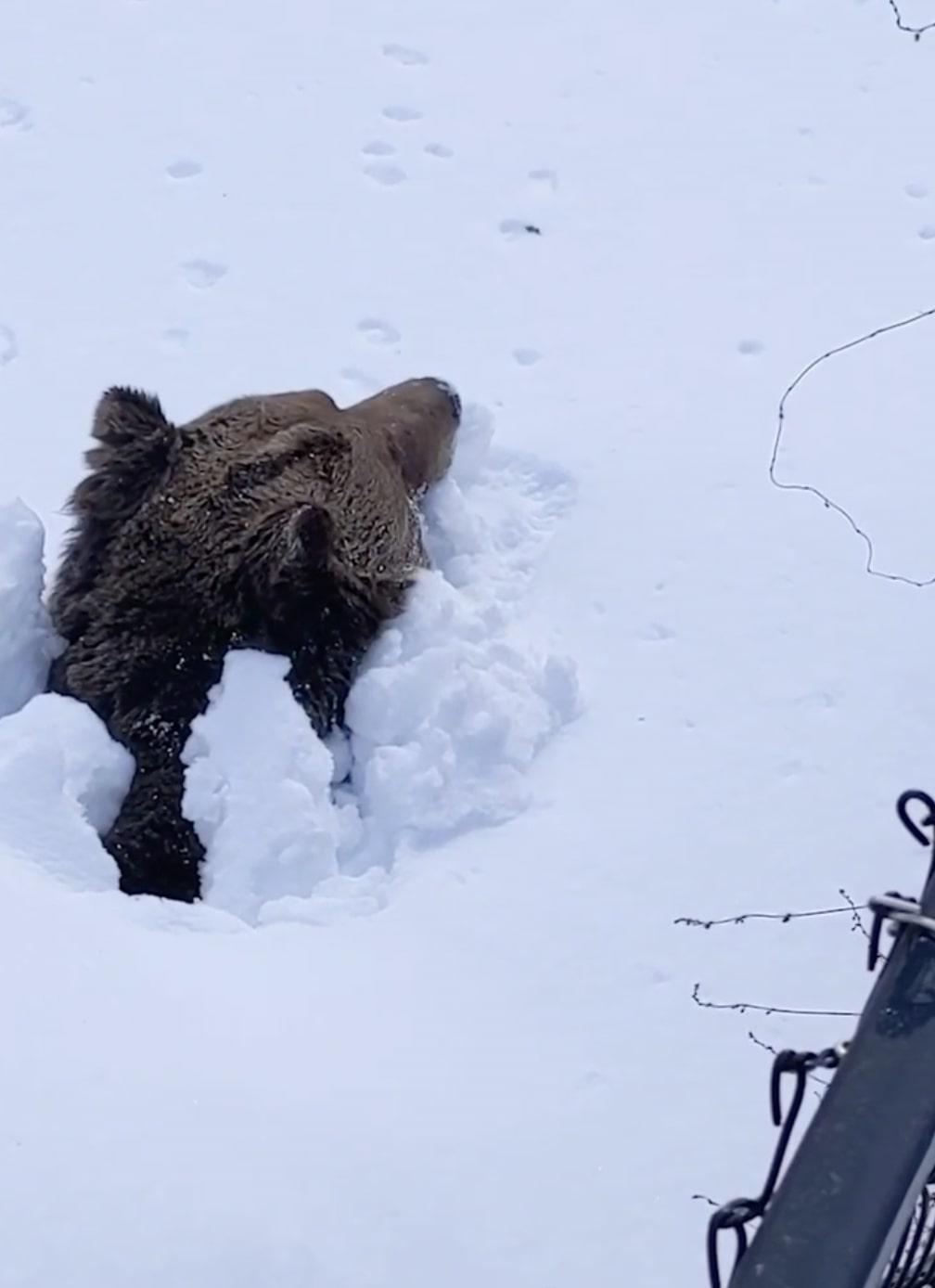
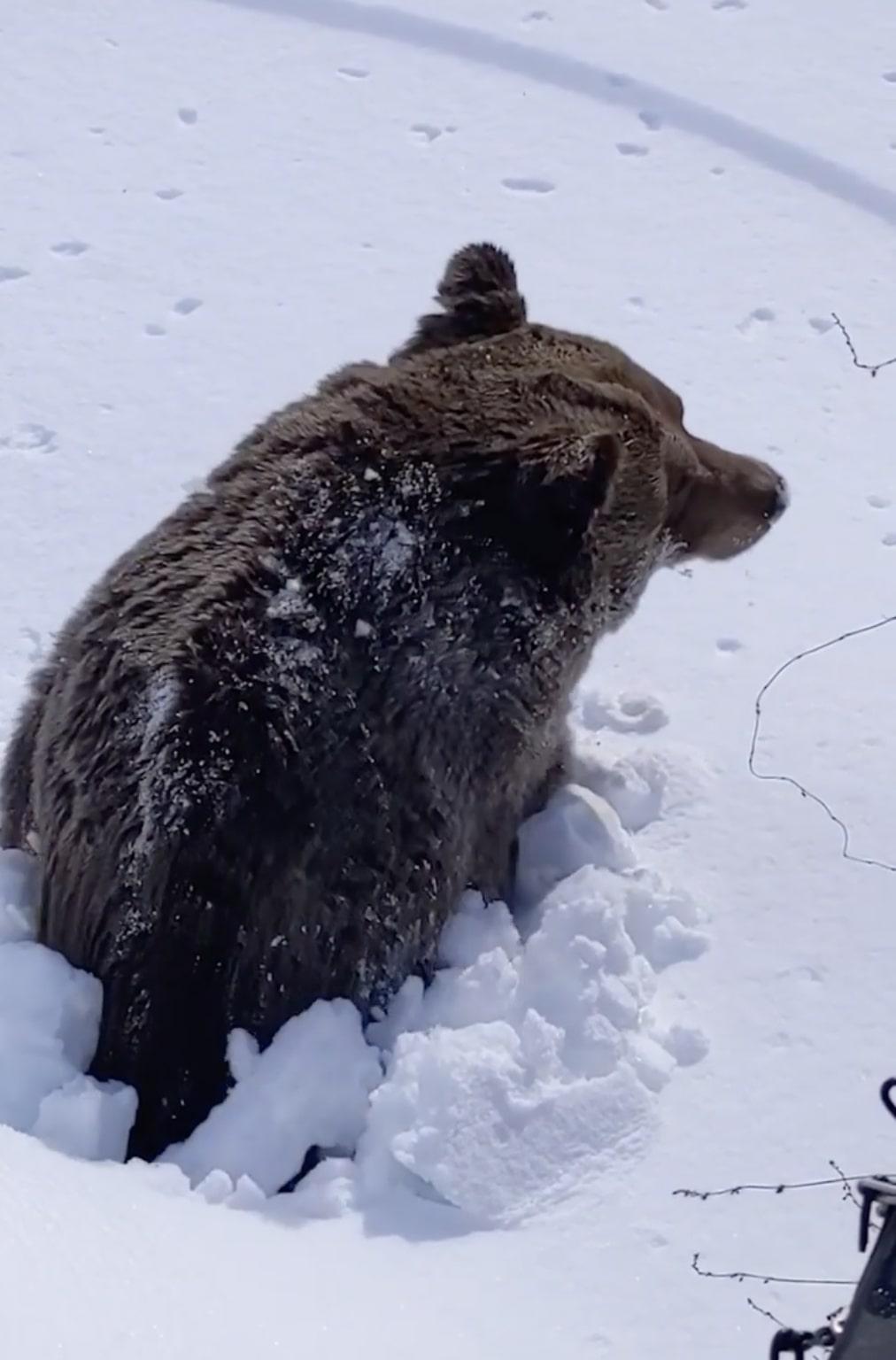
With the help of a non-invasive camera fixed to the ceiling of Boo’s den, keepers could observe his progress. Boo had been awake for most of the day for almost two weeks before emerging, said Cowan, which is “typical” for a hibernating bear.
Cowan, who'd been observing Boo’s behavior on the camera, knew that he was digging his way out.
“After hearing some cracking from the snowpack, and seeing his nose poke out just a touch, we got a camera ready,” said Cowan.
Since emerging from his den, Boo was interested in the new smells, and mostly lounged around, Cowan explained.
According to Cowan, this isn’t something that people typically get to see firsthand, so their reaction was pretty good.
“It also helps create a narrative about bears, their behavior, and ecology,” she said.
Cowan claimed it takes almost two weeks for Boo to regain energy after leaving his den. Bears go into a state of “walking hibernation,” she explained, in which they reverse the torpor process that has slowed their physical functions through the winter.
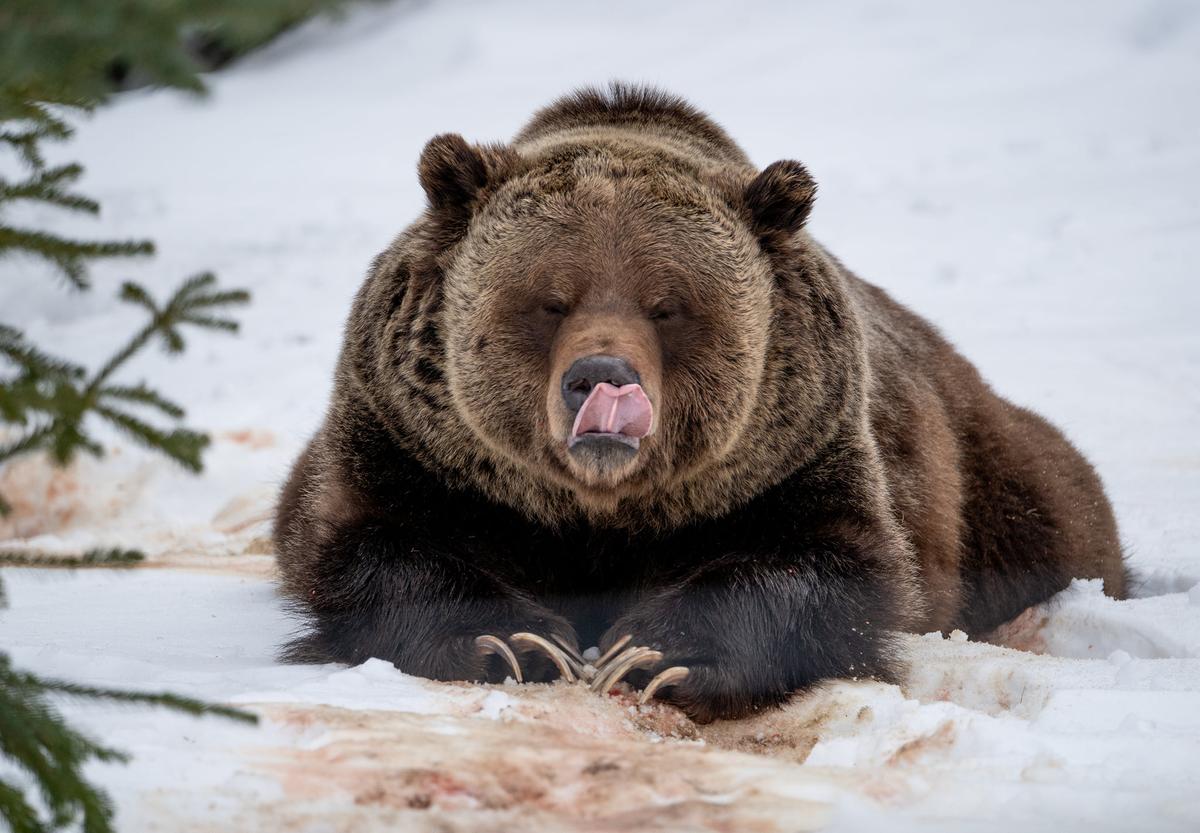
“They have been known to stop blood flow by up to 75 percent into their extremities in order to conserve energy,” Cowan explained. “They slow their metabolic system down, and we document Boo’s respiratory rate at as low as three breaths per minute while in the den. Not to mention, bears do not eat, urinate, or defecate the entire torpor period.”
Boo’s 2022 emergence marked the first time Cowan has ever seen him wake from hibernation. During winters at the refuge, she typically works on data collected from Boo’s activity the previous year. At the end of February, she and her team prepare the enclosure for Boo’s emergence, during which time the resort is closed to the public.
“It’s a lot of work due to the snowpack around the fence, and is just so rewarding when he is ready to wake up and use it,” she said. “It’s very exciting.”
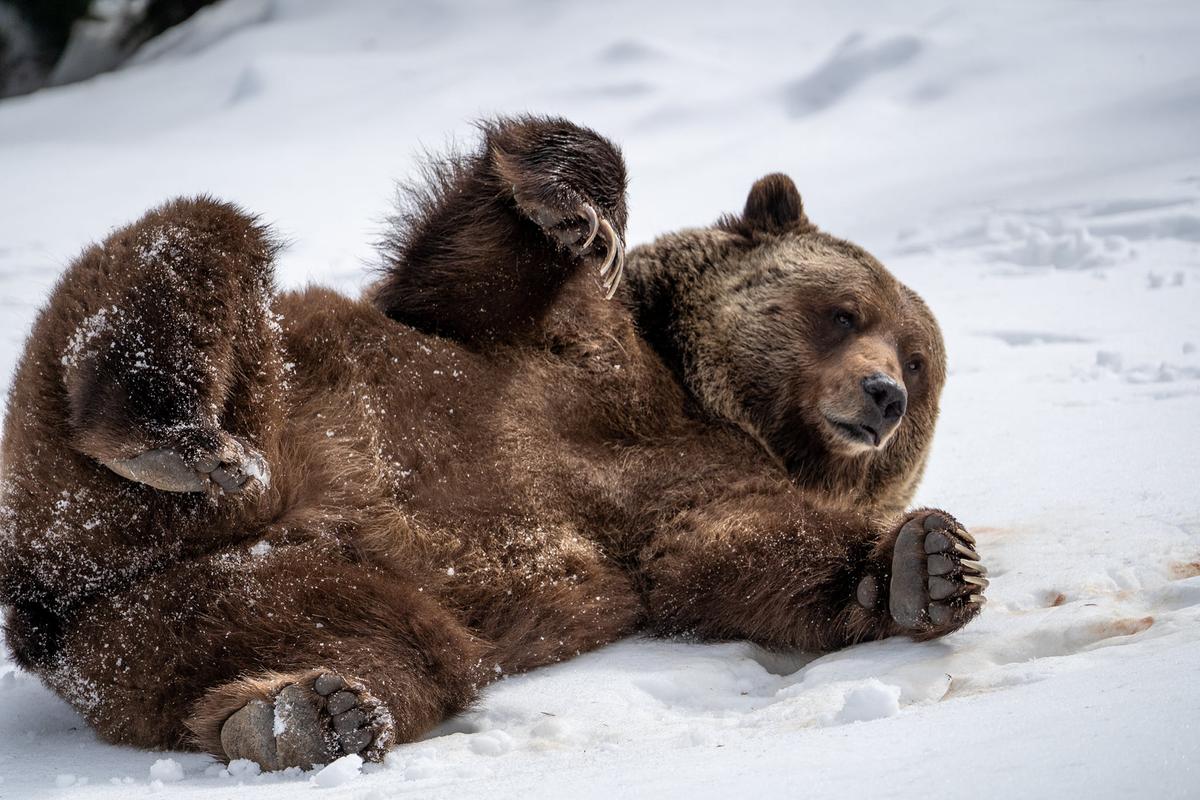
Data collected from Boo’s den camera is helping the refuge better understand the grizzly bear’s behavior.
Since 2003, the staff have been fascinated by Boo’s underground activity. Contrary to popular belief, it’s not all rest and relaxation.
In between deep states of torpor, Boo will have “short periods of waking up mid-day to stretch and ‘fluff the pillows,’” said Cowan. When spring sunlight returns and temperatures rise, Boo wakes for longer periods of time, intermittently poking his head out to eat snow covering his den entryway.
“But otherwise, he stays in a slow awakening period, similar to us taking an ‘extra five minutes’ before actually getting out of our comfy warm bed to face the day,” Cowan shared.
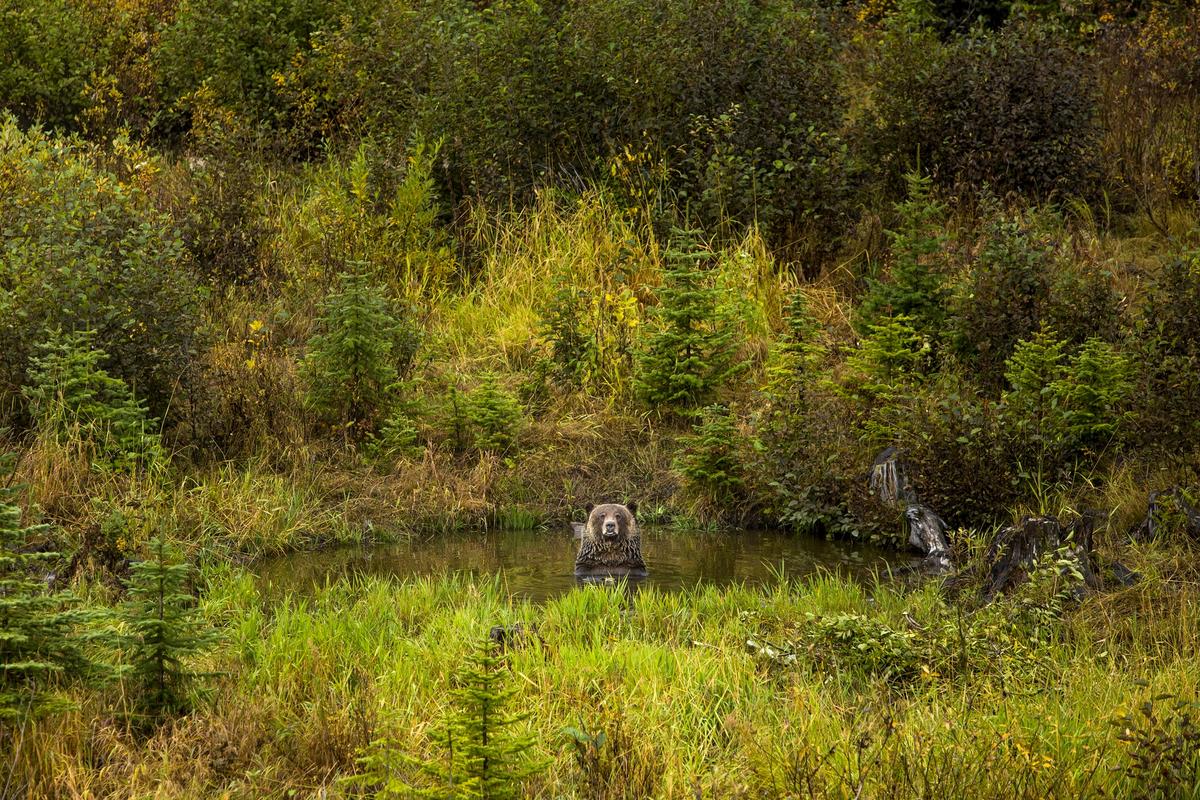
When Boo finally emerges, staffers are on hand to make sure his space is calm. As the nearby mountain resort is a hotspot for skiers, and visitors are welcomed at the refuge, keeping people quiet is paramount.
“Chatting and nearby light conversation is fine, but people shouting to their friends, or loud noises, is something we constantly monitor,” said Cowan.
Yet Boo can differentiate Cowan’s voice from the voices of strangers. As Boo’s head caretaker of seven years, Cowan introduces him on the camera in a soft voice, as she is very familiar with him. She also mentioned that calm talking has “proven to be a great tool during times of stress, concern, and everything in between.”
Upon entering his normal activity phase, Boo then moves into his massive 20-acre habitat at the refuge, the world’s largest grizzly bear enclosure. Here, he can hunt, swim, play, nap, and forage for natural food sources.
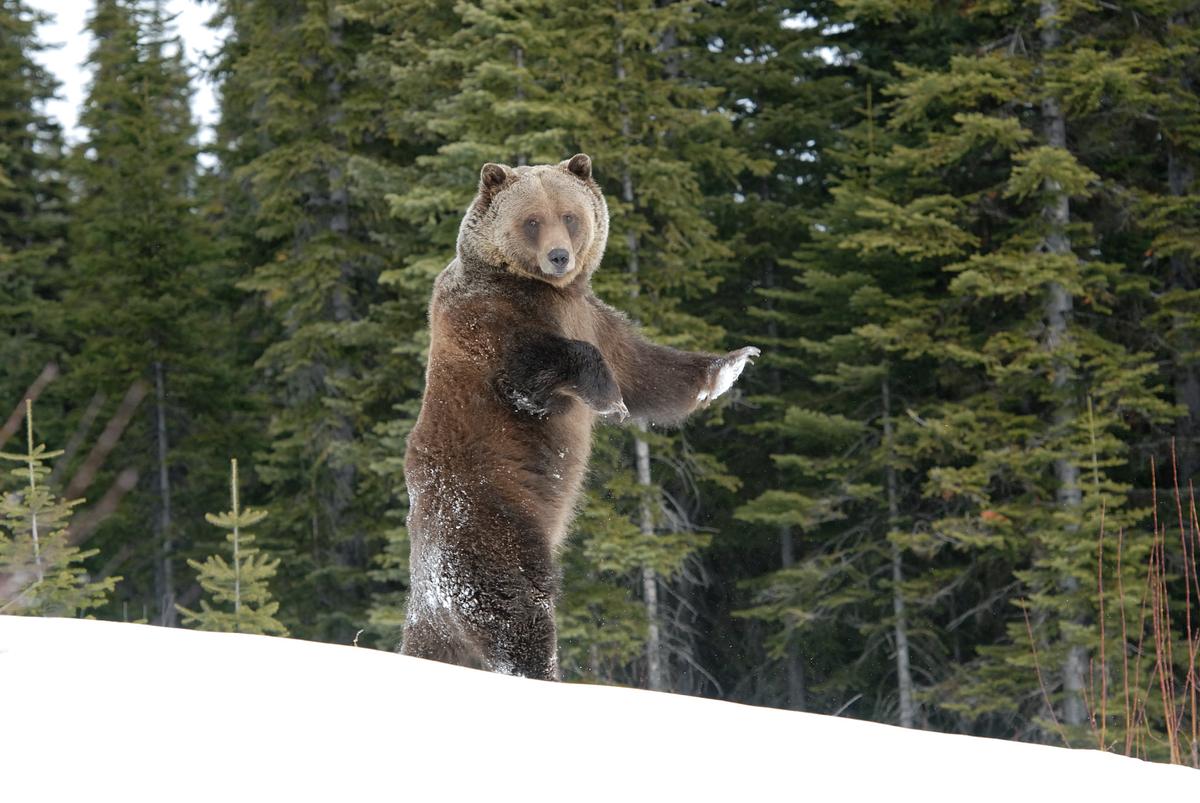
Skiers are able to “catch glances during this time while skiing by,” then return to the refuge for a tour to meet Boo and hear his story. Visitors have partial access to Boo’s enclosure; albeit a social grizzly bear, it is Boo’s choice how much he interacts with the public.
Boo and his brother, Cari, were orphaned in 2002 as 4- or 5-month-old cubs when a poacher shot their mother near a highway in the Cariboo area.
With no raise-and-rehabilitation programs permitted in British Columbia at the time, the only options for the defenseless cubs—who had a very low chance of survival—were captivity or euthanasia.
Luckily for the pair, who were named after the area they originated from during their first year at Grouse Mountain Endangered Species Refuge in North Vancouver, Kicking Horse Grizzly Bear Refuge was being built for them.
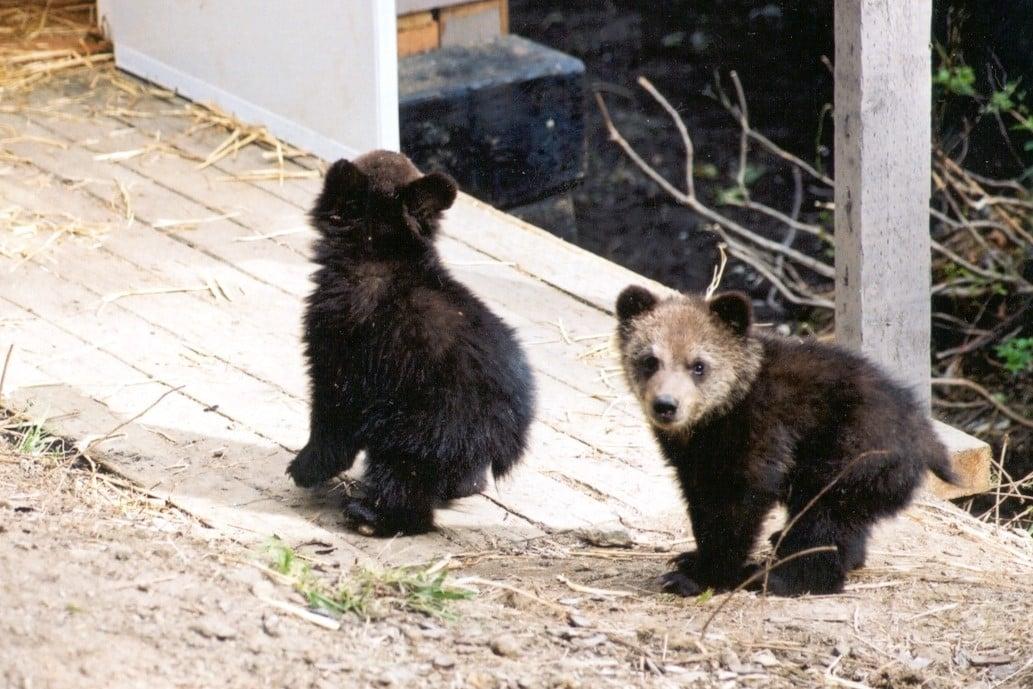
Sadly, Cari did not survive his first hibernation; necropsy results showed he suffered a twisted small intestine, said, Cowan. But 20 years on, Boo is thriving.
His keepers held a celebration for his milestone birthday in partnership with the Grizzly Bear Foundation this month to raise funds for Project ReWild, a research project based on the post-release success of grizzly cubs in raise-and-rehabilitation programs.
Kicking Horse Grizzly Bear Refuge, and its multi-ecosystem enclosures that mimic natural settings, have given rescued cubs the chance to learn through trial and error and have provided vital data on bears’ instinctive behavior. For Boo, the program saved his life.
“Today, more than 30 grizzly cubs in similar situations have been given a second chance in the wild because of these programs,” said Cowan.





